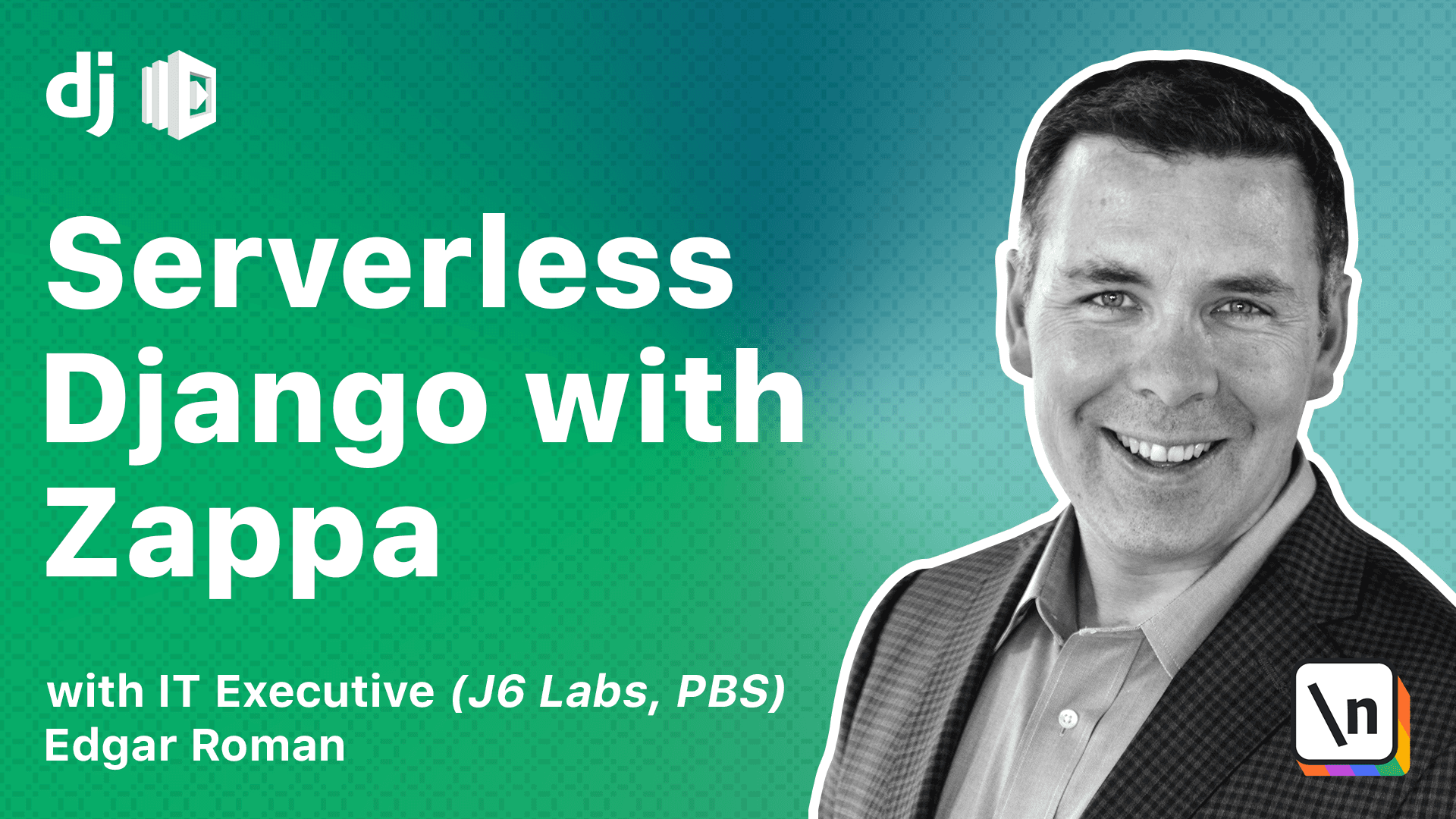A Quick Overview of HTTPS and Custom Domain Names
Making your website link user friendly
This lesson preview is part of the Serverless Django with Zappa course and can be unlocked immediately with a \newline Pro subscription or a single-time purchase. Already have access to this course? Log in here.
Get unlimited access to Serverless Django with Zappa, plus 90+ \newline books, guides and courses with the \newline Pro subscription.

[00:00 - 00:07] Let's talk a little bit about custom domain names. So far, we've gotten pretty ugly URLs for our Zapper projects.
[00:08 - 00:17] You can see here I pasted an example URL, and it's not pretty at all. Ideally, we wouldn't use a friend of the URLs, like zappaguy.com.
[00:18 - 00:19] Let's look at how to do this. Here are two options.
[00:20 - 00:26] You can use a service in front of your Zapper projects. For example, using a Content Delivery Network.
[00:27 - 00:40] By using a Content Delivery Network or CDN in front of your Zapper project, you can hide the ugly URL and expose a friendly one to your users. Most CDNs offer this as a service.
[00:41 - 00:48] There are also some proxy services that would do the same thing. Alternatively, you can use Zappa to associate a custom URL with your project.
[00:49 - 01:00] That's the path we're going to go down in this lesson. First, we need to talk a little bit about how HTTPS works, and the various organizations involved.
[01:01 - 01:10] You may already be familiar with some of these terms, but let's go through them now. A domain registrar provides a registry of domain names and validates ownership.
[01:11 - 01:22] An example of a registrar may be namedcheap.com or goDaddy.com. Also note that many of these organizations play multiple roles on this list.
[01:23 - 01:27] Emissons provides all these services listed here. Next is the DNS provider.
[01:28 - 01:36] The DNS provider translates a domain name to an IP address, so it can be routed on the Internet. Next is hosting provider.
[01:37 - 01:45] For this course, this is AWS because we've loaded your Zapper project in AWS Lambda. Finally, there is a certificate authority.
[01:46 - 02:07] A certificate authority is a trusted organization that holds and issues cryptographic certificates, so that secure connections can be established between the browser and the server. We're not going to dive into the technical details of how all these work together, but it's important to know the terminology so that we can fall along in this lesson.
[02:08 - 02:18] You're going to need a registered domain from a domain registrar. A .com domain can be registered for about $12 a year, depending on which service you use.
[02:19 - 02:30] For this lesson, we're going to use the example domain zappaguy.com. I've already registered it, and we're going to go through the process of associating it with our Zappa project.
[02:31 - 02:31] Let's get started.